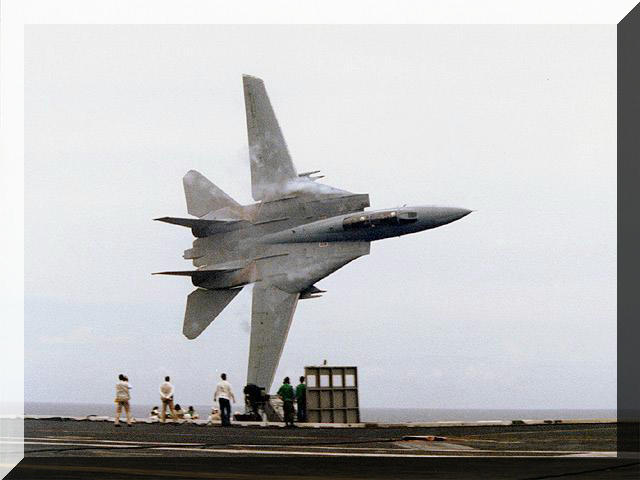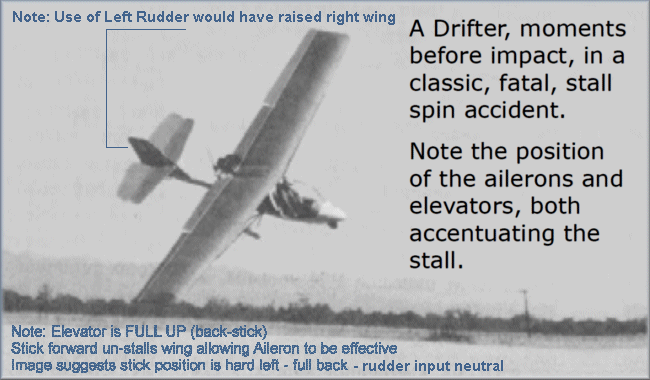THE 50/50 TAKE-OFF
or
50 knots I.A.S. at 50% of the Airstrip
|
Suggested for pilots flying any single engine, normal production built aircraft,
departing or taking off on any airstrip or runway surface under any wind or gradient conditions at any height and at any
temperature, where doubt may exist on accurate data on strip length and/or surface conditions including wind strength and
direction
|
FIRST THING TO DO
Find the "middle" of the airstrip, that is, pace out the airstrip and find half
or 50% of the result
Mark this position on the side of the airstrip and make sure it will be visible to the pilot during the take-off
TAKE-OFF
On take-off monitor the airspeed indicator and make sure it is reading 50 kts
or better as this marked mid-way point is passed, IF NOT, ABORT THE TAKE-OFF
- You need at least 50 kts at the halfway point
It is far better to remove some weight from the aircraft, if you have aborted, before
trying again
Also consider leaving a passenger at the airstrip to be picked up later after you have deposited some of your "weight" at a
nearby "longer" runway
RISK FACTOR
The 50/50 rule, use at your own risk, not to be substituted for official
Flight Manual requirements
The above calculation¹ is based on the requirement that all FAR 23 certified S/E aircraft
(i.e.., production aircraft, not home built) must have a stall speed not above 60 kts.,
and therefore the (recommended) take-off safety speed would be around 70 kts or less
|
|
¹
The requirement is to be at 70% of this speed at 50% of take-off distance as
described in the book by H. H. Hurt, Jr, "Aerodynamics for Naval Aviators" page 393 and issued (in the U.S.A. 1960) by the
Office of the Chief of Navel Operations, Aviation Training Division
|
|

Low Level Turns
If you are one of those pilots who insists on making low level turns - just like the turn onto final because you misjudged and overshot the runway - then the following may interest you
If you must do these turns be very careful - do not become complacent and end up being a "stall/spin" statistic
The suggestion¹ when carrying out this highly dangerous manoeuvre of low level turning is:
- Apply aileron first to roll the aircraft - DO NOT PULL "G" - prior to roll input
- When the correct angle of bank is achieved stop the roll - centre the control wheel
AND THEN pull the "G"
- RELEASE "G" BEFORE applying aileron to ROLL OUT of the turn
¹ From personal observation spanning 35 years of piloting light aircraft most machines that impact the ground as a result of high vertical speed can be
traced back to a problem of excessive "G-PULL" control input just prior to impact
|
Click Image to Enlarge

Details about Image HERE
|
Five Stages
- Roll
- Stop roll
- Pull "G"
- Release "G"
- Roll out
|
Click Image to Enlarge

Left Rudder not used to lift Right Wing
|
|
|
You would have been taught that there is an increased stall speed during "banking" - this is true - however if the above suggestion is used it may increase your chances of
survival when operating "down low"
A Short Note
All aircraft experience a lower stall speed when operating at less than one "G" compared to the normal one "G" situation where this speed is calculated
Something to remember when and if you ever fly 'low and slow'
Always have the aircraft in a position where less than one "G" can be applied during a turn by relaxing or moving the control wheel or stick forward to create this "G" situation
of less than the normal one positive "G"
Have you ever noticed the experts doing low level aerobatics?
One classic example is Bob Hoover if you ever get the chance to see him at an air show it will be well worth your while (note:- too late now - retired)
From personal observation - to commence a roll Bob pitches the nose of the aircraft well up then bunts forward slightly before applying aileron input creating an
environment of slightly less than one "G" - but still positive "G" - for the commencement of the manoeuvre!
Worth thinking about and applying it to your style of flying!
|
|
 PILOT
PILOT PILOT
PILOT